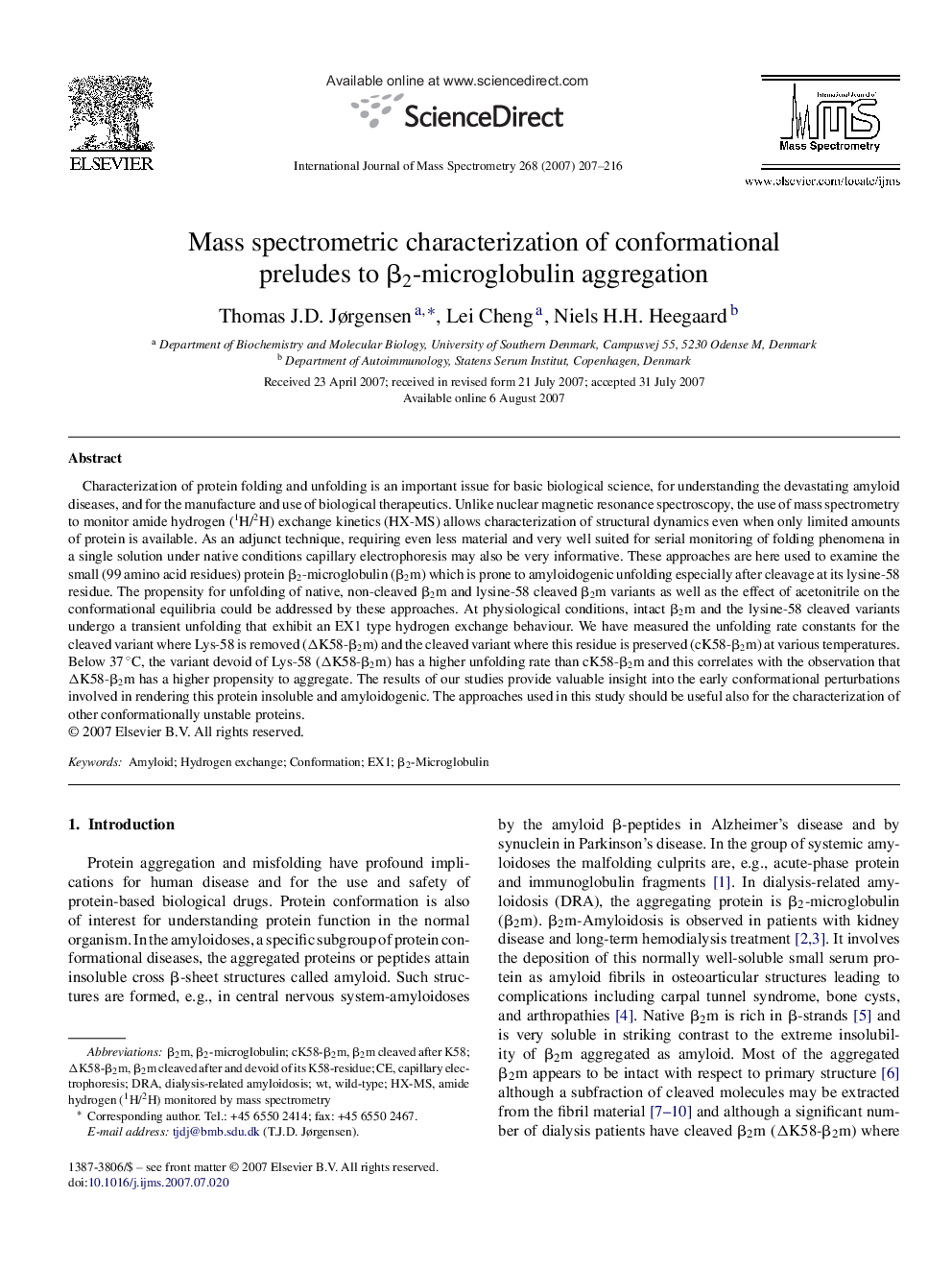| Article ID | Journal | Published Year | Pages | File Type |
|---|---|---|---|---|
| 1194032 | International Journal of Mass Spectrometry | 2007 | 10 Pages |
Abstract
Characterization of protein folding and unfolding is an important issue for basic biological science, for understanding the devastating amyloid diseases, and for the manufacture and use of biological therapeutics. Unlike nuclear magnetic resonance spectroscopy, the use of mass spectrometry to monitor amide hydrogen (1H/2H) exchange kinetics (HX-MS) allows characterization of structural dynamics even when only limited amounts of protein is available. As an adjunct technique, requiring even less material and very well suited for serial monitoring of folding phenomena in a single solution under native conditions capillary electrophoresis may also be very informative. These approaches are here used to examine the small (99 amino acid residues) protein β2-microglobulin (β2m) which is prone to amyloidogenic unfolding especially after cleavage at its lysine-58 residue. The propensity for unfolding of native, non-cleaved β2m and lysine-58 cleaved β2m variants as well as the effect of acetonitrile on the conformational equilibria could be addressed by these approaches. At physiological conditions, intact β2m and the lysine-58 cleaved variants undergo a transient unfolding that exhibit an EX1 type hydrogen exchange behaviour. We have measured the unfolding rate constants for the cleaved variant where Lys-58 is removed (ÎK58-β2m) and the cleaved variant where this residue is preserved (cK58-β2m) at various temperatures. Below 37 °C, the variant devoid of Lys-58 (ÎK58-β2m) has a higher unfolding rate than cK58-β2m and this correlates with the observation that ÎK58-β2m has a higher propensity to aggregate. The results of our studies provide valuable insight into the early conformational perturbations involved in rendering this protein insoluble and amyloidogenic. The approaches used in this study should be useful also for the characterization of other conformationally unstable proteins.
Keywords
Related Topics
Physical Sciences and Engineering
Chemistry
Analytical Chemistry
Authors
Thomas J.D. Jørgensen, Lei Cheng, Niels H.H. Heegaard,
